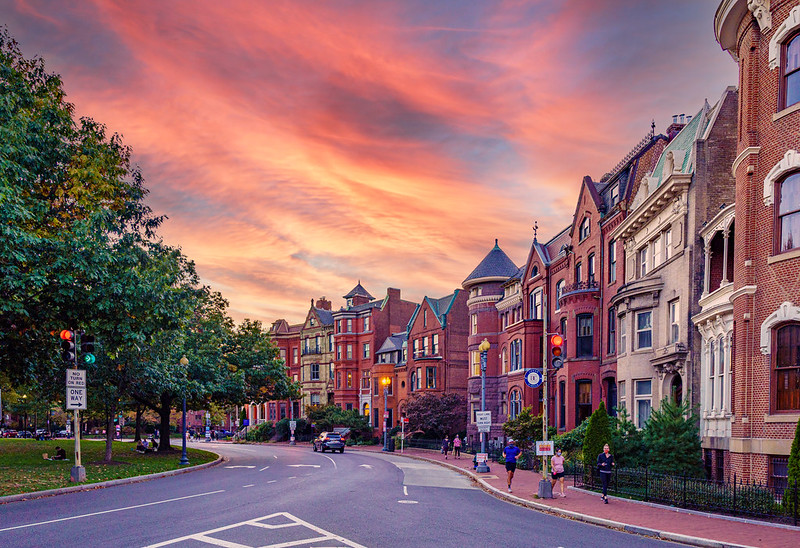Coalition for Smarter Growth
Press Release
For Immediate Release:
April 29, 2021
Contact: Stewart Schwartz, 703-599-6437
Statement on the Washington, DC region’s deadly roads and too many lives lost
The Coalition for Smarter Growth shares in the profound sadness and anger at the deadly state of our region’s roads. In the past month, there have been six lives lost in DC alone to preventable traffic crashes: Jim Pagels, Brian Johnson, Evelyn Troyah, Zy’aire Joshua, Waldon Adams, and Rhonda Whitaker. Numerous other fellow residents have been killed in the region’s suburbs including at least four people so far this year in Fairfax: Raymunda Garcia-Hernandez, Christine Caldwell, Ramakant Bhusai, and Choon Yoo. We extend our deepest condolences to the loved ones of all those lost on the unnecessarily dangerous roads in our region..
We commit to working with our partners in the non-profit community and with area officials to address dangerous road conditions and other factors with a goal of ending traffic deaths and serious injuries.
Despite an overall reduction in vehicle traffic during the pandemic, traffic fatalities soared due to increased speeding and reckless driving. A recent report from the Governor’s Highway Safety Association showed that pedestrian deaths have risen 46% over the last decade, and the Metropolitan Washington Council of Governments says bicyclists and pedestrians are one-third of traffic fatalities in our region. Smart Growth America (SGA), in Dangerous by Design, documents the racial and economic disparities in these deaths and serious injuries among pedestrians and cyclists, and the major role of dangerous road designs that favor the speed and movement of cars over the safe movement of people and safe local access to schools, libraries, services, jobs, and transit. SGA has also shown that as a percentage of people walking, it is our suburban arterials that are the most dangerous.
Unfortunately, the presentations at the recent Council of Governments/Transportation Planning Board Vision Zero Arterial Summit confirmed that most area jurisdictions are not doing enough to fix our roads — particularly our suburban arterials — to make them safe places for walking and biking and taking transit. Too many DOTs continue to focus on moving cars, building new roads, and expanding existing roads. Instead, DOTs should be redesigning our existing roads to be humane places that support the growing demand to walk and bike for access to daily needs, to improve our health, and to fight climate change.
We need action now from our local, regional, and state leaders to prevent further loss of life. We wholeheartedly endorse the five recommendations and accompanying detailed actions for DC offered by Nick Sementelli and Conor Shaw in their recent GGWash post, which should be adopted in the surrounding suburbs as well:
1) Implement emergency road diets on all arterial streets, followed by permanent changes
2) Reduce speed limits on all roads, and deploy automated enforcement to make those limits real
3) Reappropriate street space for public transportation, walking, and micromobility
4) Make safe modes of transportation free and deadly forms of transportation more expensive
5) More rigorous oversight and regulation of DDOT by the DC Council
There is much to do and among the many necessary actions that need to be taken we also call for all area jurisdictions to:
1) Provide much more transparency and detail in reporting deaths and serious injuries for pedestrians, cyclists, and other micromobility users on the region’s roads.
a) Police and transportation agency reporting must include more information about the road design at each site — including the width and speed of the road (both posted and design speed), location and distance between crossing points, type of crosswalk marking, availability of pedestrian refuges, turn radii, location of bus stops compared to crossing points, etc.
b) All cases should be included in publicly accessible and easily utilized websites.
2) Shift significant funding from road expansion to retrofitting and redesigning arterial and secondary roads to be safer for pedestrians and cyclists, using Complete Streets principles, and the National Association of City Transportation Officer (NACTO) standards.
3) Commit to creating Safe Routes to School so every child can walk or bike safely to school.
4) Invest in an extensive network of protected bicycle lanes and bike/walk trails such that biking and walking to work and to meet daily needs is no longer a high-risk activity.
###


